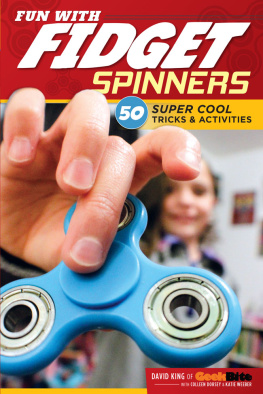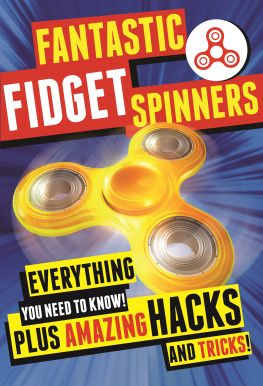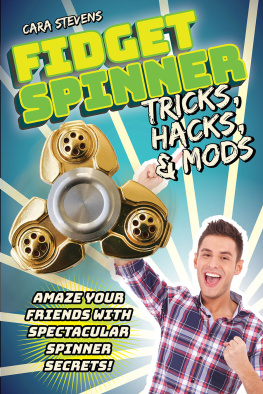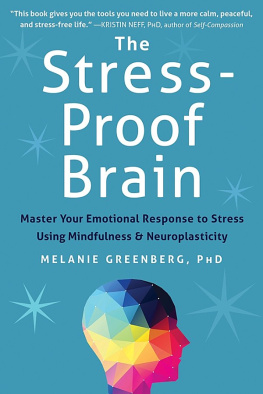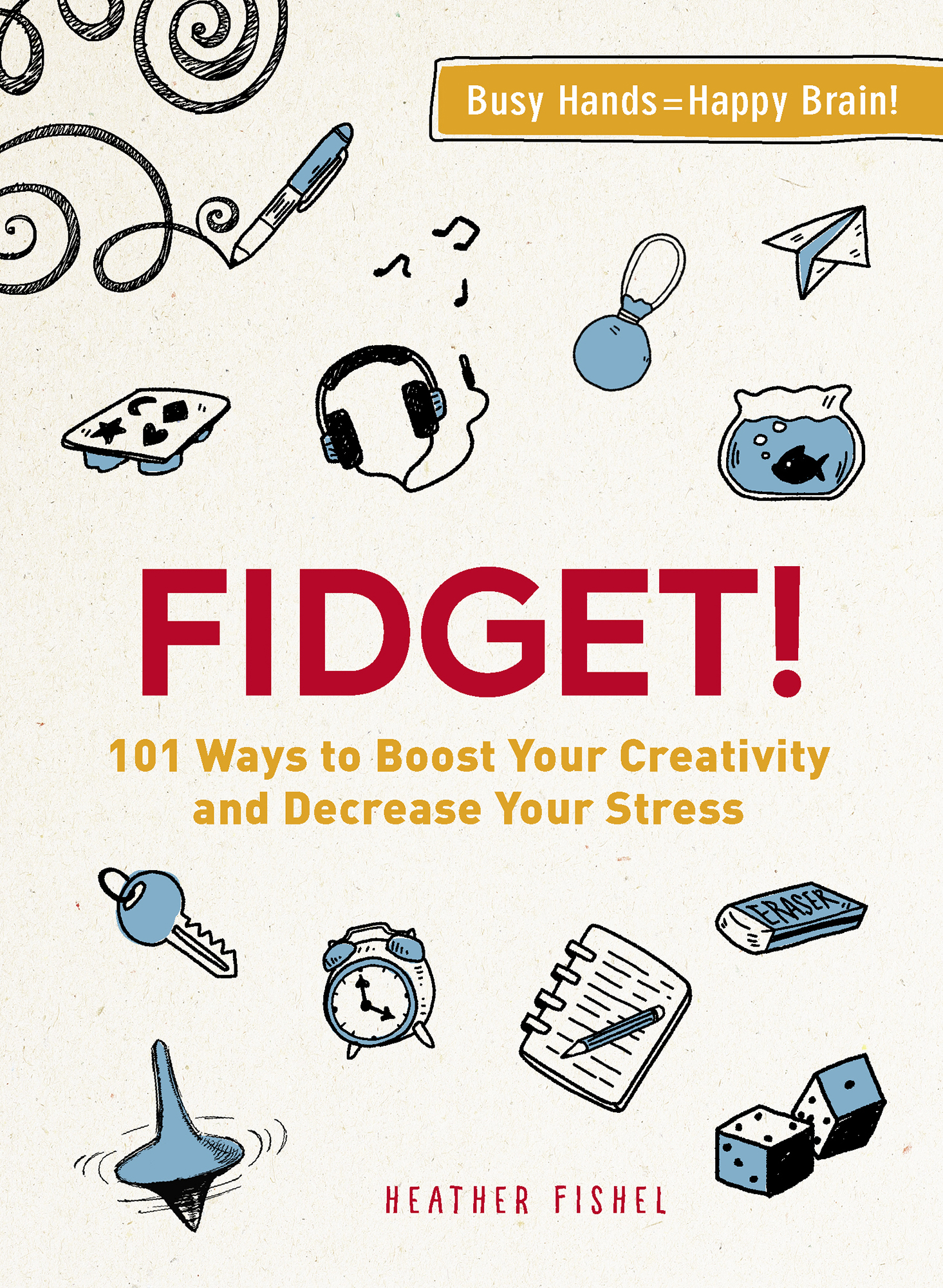CONTENTS
Guide
Thank you for downloading this Simon & Schuster ebook.
Get a FREE ebook when you join our mailing list. Plus, get updates on new releases, deals, recommended reads, and more from Simon & Schuster. Click below to sign up and see terms and conditions.
CLICK HERE TO SIGN UP
Already a subscriber? Provide your email again so we can register this ebook and send you more of what you like to read. You will continue to receive exclusive offers in your inbox.
We hope you enjoyed reading this Simon & Schuster ebook.
Get a FREE ebook when you join our mailing list. Plus, get updates on new releases, deals, recommended reads, and more from Simon & Schuster. Click below to sign up and see terms and conditions.
CLICK HERE TO SIGN UP
Already a subscriber? Provide your email again so we can register this ebook and send you more of what you like to read. You will continue to receive exclusive offers in your inbox.

Adams Media
An Imprint of Simon & Schuster, Inc.
57 Littlefield Street
Avon, Massachusetts 02322
www.SimonandSchuster.com
Copyright 2018 by Simon & Schuster, Inc.
All rights reserved, including the right to reproduce this book or portions thereof in any form whatsoever. For information address Adams Media Subsidiary Rights Department, 1230 Avenue of the Americas, New York, NY 10020.
First Adams Media trade paperback edition JANUARY 2018
ADAMS MEDIA and colophon are trademarks of Simon and Schuster.
For information about special discounts for bulk purchases, please contact Simon & Schuster Special Sales at 1-866-506-1949 or .
The Simon & Schuster Speakers Bureau can bring authors to your live event. For more information or to book an event contact the Simon & Schuster Speakers Bureau at 1-866-248-3049 or visit our website at www.simonspeakers.com.
Interior design by Colleen Cunningham
Cover design by Sylvia McArdle
Cover illustrations Shutterstock
Interior illustrations by Nicola DosSantos
Library of Congress Cataloging-in-Publication Data
Fishel, Heather, author.
Fidget! / Heather Fishel.
Avon, Massachusetts: Adams Media, 2018.
LCCN 2017040183 | ISBN 9781507206010 (pb) | ISBN 9781507206027 (ebook)
LCSH: Distraction (Psychology) | Mental fatigue. | Stress management. | Creative ability.
LCC BF323.D5 F57 2018 | DDC 155.9/042--dc23
LC record available at https://lccn.loc.gov/2017040183
ISBN 978-1-5072-0601-0
ISBN 978-1-5072-0602-7 (ebook)
Many of the designations used by manufacturers and sellers to distinguish their products are claimed as trademarks. Where those designations appear in this book and Simon & Schuster, Inc., was aware of a trademark claim, the designations have been printed with initial capital letters.
CONTENTS
BOUNCING, TAPPING, DOODLING, AND OTHER PHYSICAL FIDGETS
FIDGETING WITH VISUAL DETAILS
FIDGETS WITH BITE AND SPICE
FIDGETING BY LISTENING
FEELING AND FIDGETING WITH DIFFERENT TEXTURES
INTRODUCTION
Ever catch yourself fidgeting? Do you gnaw at the tip of your pen while you work? Are you prone to staring out the nearest window, more immersed in the sights and sounds outside than the computer screen in front of you? Have you been guilty of bouncing in your chair to the beat of your favorite song while tackling tasks? Two pieces of good news: youre not alone, and youve picked up the right book!
Nearly everyone becomes distracted when they try to maintain concentration for a long period of time. Behavioral scientists tell us that many of todays jobs, schools, and lifestyles put us in unnatural positions literally: neither our brains nor our bodies were made to focus for countless hours on end. We were made to move around. The long periods of sitting, the lack of changes in our physical and mental scenerytheyre enough to test anyones attention reserves.
Commanding yourself to Just focus! isnt enough to boost your concentration on your work: we all know this because weve tried it untold times. Often, the solution to wandering thoughts or a fading attention span isnt found in orders or instructions to ourselves, or even in words at all. We can feel it in our bodiesthey want to move!
Where we once fought those urges to move, doodle, stare, and daydream, more and more of us are realizing that the only way out is to give in to our fidgety urges. Research increasingly confirms it: let your body move, your brain daydream, your hand doodle, and youll become more productive, more creative, and more engaged over the long haul.
Fidgeting is the bodys way of dealing with the sedentary habits that have become increasingly common in twenty-first-century life. For the most part, we have trained ourselves to sit and concentrate when we perform any kind of taskto address the challenge by pressing the focus button until were done. You may even agree that a key sign of a great work ethic is a persons ability to labor over a task without any sign of distraction until the work is done. This approach may look appealing, but its not very efficient or effective: neuroscience tells us that the more repetitive and boring a task is, the more likely your brain is to tune out. When we sit stationary in front of a computer screen for hours on end or stuff hundreds of envelopes in one sitting, were practically begging our minds to start wandering. When they wander off on their own and focus is completely lost, experts estimate that it can take as long as 25 minutes for us to return our full attention to a task, wasting precious time and exhausting our limited resources.
We should be fidgeting instead! Long misunderstood as a telltale sign of an undisciplined mind, fidgeting is enjoying a complete rethinking by cognitive and behavioral researchers, educators, and maybe even a parent or two. In this book, youll come across familiar fidgets, some others youve never thought of, and maybe even a few youve been doing all your life without realizing it! In reading through them, youll understand a bit better just what youre getting out of that doodling or pacing and discover some new ways to fidget that just might be perfect for you.
So what counts as fidgeting? According to Purdue University, fidgeting is what were up to when we do two things simultaneously: one activity focuses part of the brain on the most important action, while the second utilizes an entirely different part of the brain and body to dispense with static, or built-up, frustrated energy. That second activitythe fidgetfrees up the main part of the brain to devote its focus to the important project at hand. Even though it seems counterintuitive, distraction and loss of focus often arise not because were out of energy, but because weve got too much mental and physical energy that isnt used up in the process of doing whatever it is were focused on. When our feet start tapping or our eyes begin to roam around, our bodies are telling us they need somewhere to release all that excess energy. They need to fidget.
In fact, allowing yourself to fidget in any waydoodling across a notepad, rubbing a smooth stone, kicking the legs of your chair promotes more creative thought, speedier learning, and improved focus. Studies have also found that fidgeting enhances concentration, relieves stress and anxiety, and inspires creative thinking. The key may be finding the fidget that works best for you. Different fidgets connect with different parts of our brains and bodies, solving different problems and demonstrating different benefits. Repetitive fidgets, like toe tapping, can be calming, while playing with something that clicks can jolt your attention back to a task. As long as the movement, activity, scene, or sound doesnt distract you or require your full attention, just about any fidget will help boost your productivity and expand your potential.


